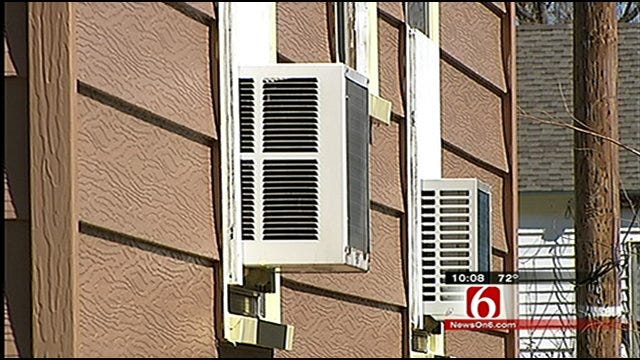Stimulus Weatherization In Oklahoma: One Bad Apple Doesn't Spoil The Bunch
In slightly less than two years, federal stimulus dollars have weatherized the homes of more than 4,000 low-income families in Oklahoma.Thursday, April 7th 2011, 9:17 pm
Alex Cameron, Oklahoma Impact Team
Editor's note: The Cookson Hills Community Action Foundation mentioned in this story is not affiliated with and has no connection to Cookson Hills Christian Ministries.
OKLAHOMA CITY -- In slightly less than two years, federal stimulus dollars have weatherized the homes of more than 4,000 low-income families in Oklahoma -- and the number should top 7,000 by the time the funding is all spent.
Stimulus critics, from the outset, voiced concern about the weatherization program's vulnerability to fraud and abuse, and, in fact, the Oklahoma Impact Team has discovered that federal authorities are currently investigating one of the agencies in Oklahoma tasked with managing it.
Still, those with ties to the program suggest it is one of the more underrated and beneficial ARRA initiatives, with the proof being easily available for inspection.
"It looks very good. They did good work," Regina Clear told us during a recent job inspection.
Clear is one of three monitors hired by the Oklahoma Department of Commerce (ODOC), specifically and, therefore, temporarily, for the stimulus weatherization program. She is paid with stimulus funds.
On the day we caught up with her, she was inspecting the work done at the home of an elderly Midwest City couple, Jim and Judy Porter.
"We feel so blessed," said Mrs. Porter, "we no longer have to sit around in sweatshirts and jackets when it gets cold."
Like all program applicants, the Porters had to be within 200-percent of the poverty line to qualify. Those approved are eligible for potentially thousands of dollars in energy-saving measures in and around their homes. (The Department of Energy mandates that the average cost per unit be $6,500.)
Judy Porter says, they got just about everything they could have asked for -- "Insulation in the walls, all new windows, new doors, they caulked and weatherized under sinks, every hole that you could possibly imagine."
And, the Porters say, they're already saving money on utility costs.
"Our electric bill dropped twelve dollars the first month," stated a proud Mrs. Porter. "It has now dropped $52."
As happy as the Porters are with their newfound comfort and savings, Clear was equally happy with the quality of the work.
ODOC monitors share the responsibility of visiting -- once per quarter -- each of the 18 community action agencies with whom the state contracts to implement the weatherization program. During these visits, which typically take two days, they are expected to inspect ten percent of the homes that the agency has worked on over the previous month.
Just as important as the inspection of the energy-saving measures is the monitors' review of each agency's internal controls.
"We're making sure their financial controls are in place, we're making sure their record-keeping is accurate," explained Tina Lindsay, ODOC's Director of Programs, "and that information that they've submitted to us reconciles once we get out on site."
Each visit results in a monitoring report, a report card, essentially. ODOC officials tell us their inspections have turned up no significant problems with the weatherization program at any community action agency, except one: Cookson Hills Community Action Foundation, in Stilwell, Adair County.
"It's not as if they were not doing anything," Lindsay told us, "but it could have been better, and we expected better."
The last two monitoring reports for Cookson Hills Community Action Foundation (July 2010 and October 2010) are a thick catalog of mistakes and missteps: units were counted as 'complete' although material and labor were pending; the agency purchased furnaces that were incompatible with the home's primary fuel source; accounting ledgers didn't reconcile with expenditure reports; tracking guidelines weren't being followed; files were incomplete.
The monitor, Christy Davis, concluded in each report: "The overall quality of work was found to be poor."
"When those...things are not aligning themselves with program requirements," Lindsay said, "we have to, at some point, say, 'Hey, we got to call it quits here.'"
A December 9, 2010 letter from then-Secretary of Commerce Natalie Shirley informed the Cookson Hills board that "all contracts between Cookson Hills [Community Action Foundation] and ODOC...will be redirected to either Northeast Oklahoma Community Action Agency or KiBois Community Action Agency at the discretion of ODOC."
Just before Christmas, more than thirty Cookson Hills Community Action Foundation employees, all but one, were laid off.
"I'm not really sure what was going on, it wasn't explained to us what was going on," said Brian Delhomme, one of those who lost his job.
Delhomme didn't work directly on the weatherization program but says he was generally aware of the problems they were having. He and others who did work there say the accounting department couldn't handle the ARRA reporting requirements, and they blame the agency's executive director and board chairman for not being able to work together to come up with a solution.
"[Cookson Hills Community Action Foundation] had some good programs," lamented Delhomme, "and it just seems to me, because of mismanaging it and a power struggle, it's all lost...as simple as that, it's just lost."
In separate phone conversations, the former executive director, Cleon Harrell, and the board chairman, Sam Chandler, acknowledged the accounting staff's incompetency, but each blamed the other for allowing it to continue.
To this point, no one is alleging that weatherization funds were misused or that there was criminal activity at the foundation. Presumably, that is what the FBI will determine.
ODOC officials says the weatherization program is on schedule to exhaust the $60 million it received from Washington by the March 31, 2012 deadline.
More Like This
September 29th, 2024
September 17th, 2024
Top Headlines
December 15th, 2024
December 15th, 2024
December 15th, 2024
December 15th, 2024












